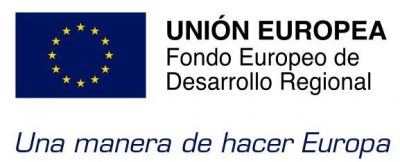|
In last years, hydrogen economy has been a lot spoken about. This term corresponds to an energetic model in which the hydrogen, obtain from clean energy, is used as a combustible to satisfice the majority of the society energetic needs.
To successfully implement this hydrogen economy, it’s necessary to overcome a series of obstacles that so far made its creation difficult, among which could be outlined:
- Optimize the different technologies of hydrogen obtention, based on renewable energies, to be competitive.
- Develop a hydrogen distribution system similar to the one that exists today for the gasoline.
- Develop hydrogen storage systems with reduced dimensions.
With the objective to contributes to the implement of a hydrogen economy in the project SMARTH2PEM we follow up as main objective the development of a low power PEM electrolyser (1KW) and competitive cost, to the hydrogen generation of high purity (99,99%) and a high pressure (>15 Bar). About the strategies to follow will be focus on 2 main lines:
- Alternatives to the reduction of the key components cost of the PEM electrolyser, enhancing also their capacities (membranes, bipolar plates and electrocatalizer).
- Efficient conception of different/various developed components.
As a specific technical objectives, the project pretends to:
- Develop membranes adapted to the electrolyser operation at high pressure and with adapted durability.
- Develop advanced electrodes that support electrolyser working conditions (P, T and oxidation).
- Develop a low cost MEAs (Membrane Electrode Assembly) manufacturing system for electrolyser systems PEM.
- Develop a coating method for bipolar plates to protect them from the corrosion, using low cost metals as a support.
- Develop an intelligent control system that allows managing the hydrogen fabrication in an efficient and secure way.
- Validate the prototype operation at laboratory scale under behavioural conditions that simulate the generation from renewable energies.
- Reduce the fossil fuels dependency via the hydrogen manufacturing, which also is a clean fuel that generates a single water waste, reducing with this mode the greenhouse gas emissions.
APPLICATION SECTORS:
- Mobility
- Energies and Water
TECHNOLOGICAL AREAS:
- Technological Line 1-1: Energetics Technologies
IVACE PROGRAM:
- Program: R&D in cooperation
TECHNOLOGIC INSTITUTE PARTICIPANT (for project in collaboration):
COORDINATOR CONTACT:
|

